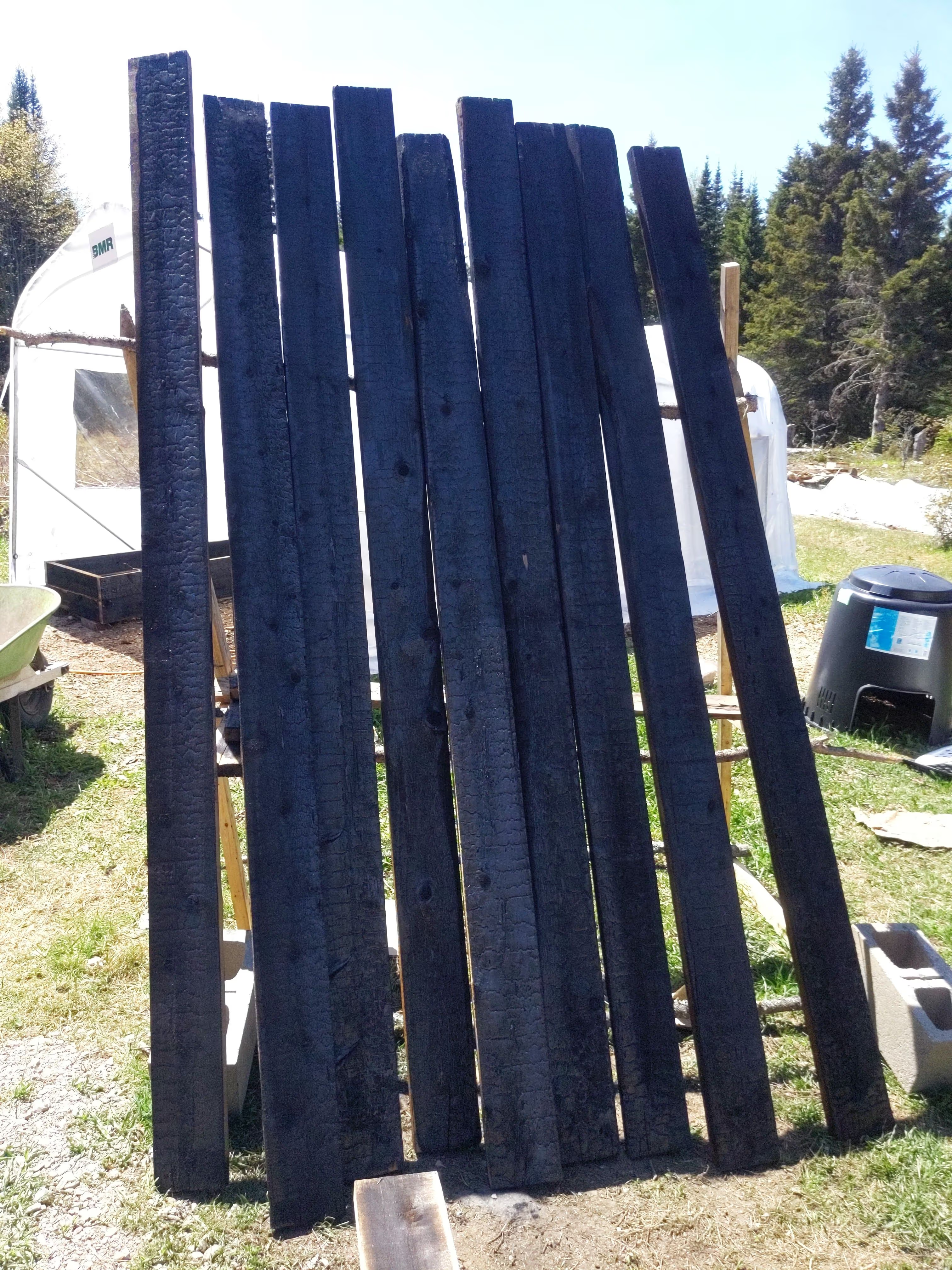Journal 2023-05-29

Building Raised Beds Using Yakisugi Ban: The Ancient Japanese Wood Preservation Technique
If you’re looking for a durable, chemical-free option for your raised garden beds, Yakisugi Ban (also called Shou Sugi Ban) offers an excellent solution.
Disclaimer and Safety Warning
NON-RESPONSIBILITY CLAUSE: The information provided in this article is for educational purposes only. Working with fire is inherently dangerous. By attempting this technique, you assume all risks associated with the process. The author and publisher are not responsible for any property damage, injuries, or other losses resulting from following these instructions. Always prioritize safety, check local fire regulations, and never leave a fire unattended. Results may vary depending on wood type, environmental conditions, and application technique.
What is Yakisugi Ban?
Yakisugi Ban is an ancient Japanese method of preserving wood by charring its outer layer using direct flame. This technique creates a protective barrier that offers multiple benefits for garden structures.
Benefits for Raised Garden Beds
- Extended Durability: The charring process significantly extends the life of wooden beds by making them resistant to rot and decay.
- Natural Pest Resistance: The charred surface repels insects naturally.
- Chemical-Free: Provides protection without harmful chemicals or preservatives.
- Environmentally Friendly: Aligns with sustainable gardening practices.
- Aesthetic Appeal: Creates a distinctive, beautiful look for your garden.
Materials Needed
Wood Selection
Cedar, oak, pine, or maple are suitable wood types for this technique but cedar remains the most durable for raised bed. It could be worth trying with cheaper construction boards to see how long it last compared to cedar.
Tools Required
- Paper for starting the fire
- High structure to hold the boards vertically at full height like in the picture
- Sawhorses with weight to prevent them tipping over
- Wire brush
- Perforated Suspension Strap, wire or something else to tie the boards together
- Cloth
- Fire extinguisher (safety precaution)
- Protective gear: dust mask and gloves
- Water source for extinguishing
- An extra bucket of water for safety
The Process
- Preparation: Set up in a safe workspace, away from flammable materials. Have your fire extinguisher and water source ready.
- Create the Chimney: Arrange three boards to form a triangular tunnel to form a chimney. The interior surfaces will be the ones that get charred. I have used 3 Perforated Suspension Strap that I roll around and screwed to the boards so they hold well
- Start the Fire: Put the chimney vertically. Place paper at one end of the tunnel and ignite.
- Monitor the Burn: The chimney design creates a natural draft, allowing the fire to draw through the tunnel and char the inside surfaces of all three boards simultaneously.
- Control: Allow the fire to burn until you achieve the desired level of charring.
- Extinguish: Once properly charred (should be under 3 minutes), drop the boards on sawhorses carefully separate the boards and extinguish any remaining flames with water.
- Redo: Revert the boards and do it again to get boards charred on both sides.
- Brushing: After the boards cool, remove the loose charred layer with a wire brush.
- Cleaning: Wipe down the boards with a cloth to remove any remaining residue.
- Assembly: Construct your raised bed using the treated boards.
Conclusion
Yakisugi Ban offers a time-tested, natural solution for extending the life of wooden raised beds. By implementing this ancient Japanese technique, you can create garden beds that are not only functional and durable but also aesthetically pleasing and environmentally friendly.
Jonathan
Published on 2023-05-29,
Updated on 2025-05-03